Auto Loans
Affordability
Loan Payment Options
Biweekly Payments
Compare Rate & Term
Rebate vs Low Interest
Home Equity Loans
Lease or Buy
 Boat Payment Calculator
Boat Payment CalculatorUse this calculator to quickly estimate the monthly payments on a new or used boat loan. Enter the amount borrowed, any application fees, the loan term & interest rate charged on the loan. This calculator defaults to monthly payments though you can change to using an alternate payment frequency. There are also options to add sales tax, trad ins and rebates to your calculation. The affordability calculator in the second tab allows you to estimate an affordable vehicle price based on your current savings and monthly budget.
Authored by Jose Abuyuan on June 1, 2020
Despite the hectic demands of modern living, people always find time for recreation and travel. Apart from taking an RV to go the beach or camp in national parks, quite a number of people actually enjoy boating activities. When summer comes, people with access to boats can enjoy fishing, water sports, and a relaxing cruise toward the sunset.
Where do you start if you want to purchase your own boat? Before you make this major purchase, it's important to know what you're getting into.
In this guide, we'll walk you through different types of boats according to their functions. We'll cover general price ranges and maintenance concerns. You'll get to know how to secure a boat loan, rates and terms, as well as information on insurance. Finally, we'll talk about storage costs for winter and several basic boating tips for beginners.
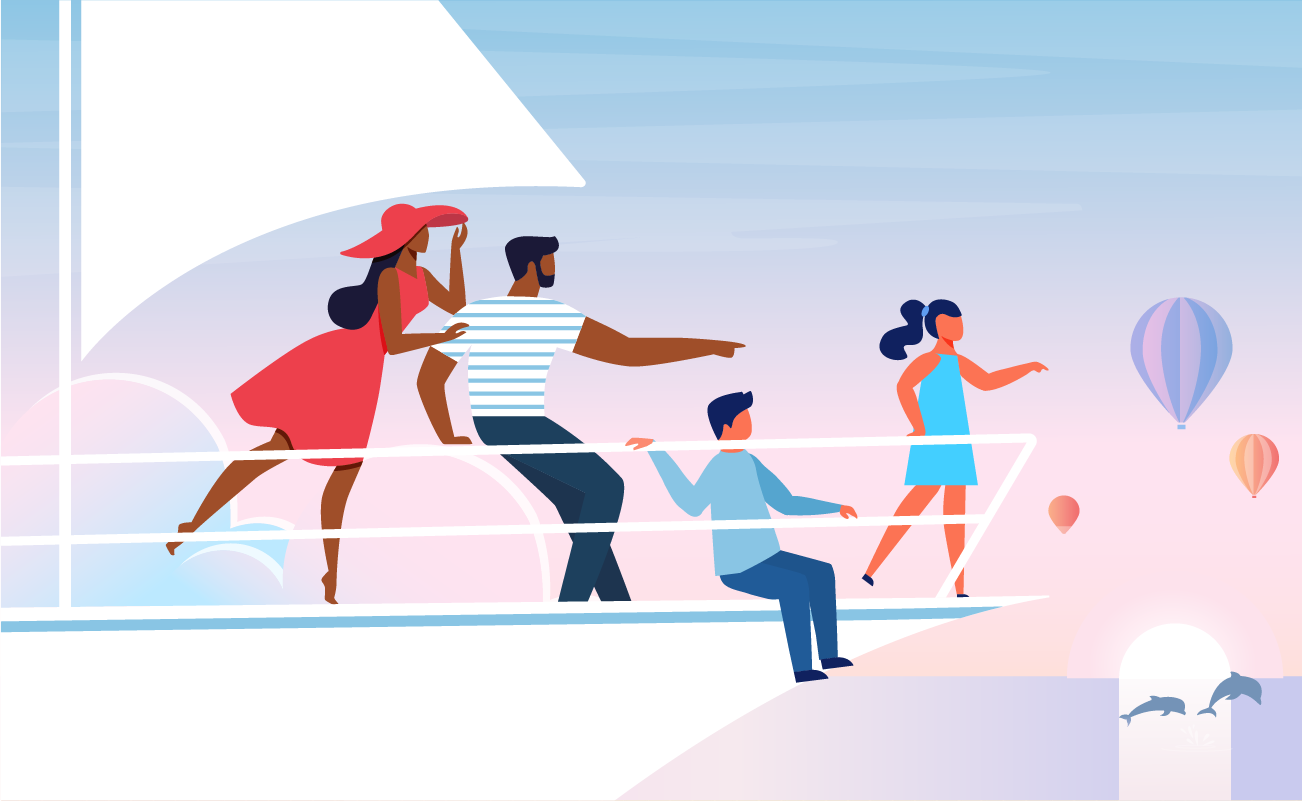
Getting into the boating lifestyle means learning about different boats and what functions they do best. This will help you know your options and which boat will work for your needs. Before you decide on which boat to buy, ask yourself these 5 questions:
1
What's the boat's purpose? – You obviously have a specific activity in mind for your boat. Some people like to go sailing or overnight cruising. Others buy boats to go fishing in lakes or open shores. For boaters into sports, they enjoy water skiing and competitive sailing in the coast. Whatever your purpose, there's a boat out there for your needs.
2
Where will you take the boat? – Knowing the location tells you what boat size you'll need. Small boats are appropriate for areas with shallow depth. They are easier to maneuver in smaller waterways. Bigger boats are better equipped for large waterways with a deeper hull.
3
How many people should get on board? – This is another factor which determines boat size. There are beachcats and sailboats which ferry one or two people. If you're taking your family with several guests, you'll probably need a larger vessel. But if it's for immediate family or trips with less than 6 people, a smaller boat may suffice.
4
Do you need to tow your boat? – Many people usually put their boat on a trailer to store and tow as they please. If you are planning to tow your boat on your trips, remember that the size and weight of the boat will impact the towing capacity of your car. For your safety, make sure you have a vehicle that is well-equipped for the job.
5
Where will you store your boat? – Not everyone has their own personal dock. Depending on the size of your boat, you may place it on a trailer and park it inside a shed or garage in your property. This helps you save a lot on storage costs. For others, they opt to store their boat in a dry outdoor facility or wet boat storage which entails monthly fees.

Expect to spend around of $200 to $300 per month on boat storage. Some options are less than $200. Rates depend on the facility, boat size and type. Dry outdoor storage is the most popular and inexpensive option, while indoor boat storage is expensive but provides the most protection for boats.
As you can see, owning a boat has many considerations. For the most part, you need to justify the expensive cost by making the most out of your investment. If you don't use a boat regularly, boat rental might be a better option for you.
Boat rental rates depend on the type of vessel. For instance, the average daily rate for a bowrider ranges between $200 to $900, while a fishing boat costs around $150 to $1,400 per day. Below is a table of average rental rates for different boats compiled by Go Downsize.
| Boat Type | Hourly | Daily |
|---|---|---|
| Airboats | $10-$100 | $60-$200 |
| Bow-Rider Boats | $40-$300 | $200-$900 |
| Cabin Cruisers | $200-$400 | $1,000-$1,500 |
| Canal Boats | Typically not possible | $1,800 (3 days) – $3,500 (7 days) |
| Catamarans | Typically not possible | $500 (1 day) – $16,000 (7 days) |
| Cuddy Cabin | $150-$250 | $375-$800 |
| Deck Boats | $140-$600 | $660-$2,500 |
| Fishing Boats | $75-$250 | $150-$1,400 |
| House Boats | $99-$300 | $600-$1,750 |
| Jon Boats | $15-$45 | $75-$150 |
| Pontoon Boats | $120-$300 | $500-$1,200 |
| Sailboats | Typically not possible | $115-$2,000 |
| Speedboats | $140-$250 | $700-$1,200 |
| Trawlers | $170-$430 | $700-$3,300 |
| Yachts | Typically not possible | $1,000-5,000 (1 day) – $35,000-$90,000 (7 days) |
Based on this table, if you go on 8 weekend fishing trips a year, you'll spend anywhere between $2,400 to $22,400 a year. If you make it a regular activity, it will really get costly annually. At this point, you might as well consider buying your own boat. There are multi-purpose boats out there that cost around $23,000 and below. However, if you don't go boating that often, say 3 or 4 times a year, then it's a good idea to stick to boat rental.
Of course, owning a boat means dealing with operational and maintenance costs. However, if your priority is comfort and convenience of having your own personal vessel, it's certainly a worthwhile investment.

The annual maintenance cost for a boat accounts for about 10% of its purchase price. Maintenance includes everything from cleaning the deck, repainting the hull annually, and for sailboats, replacing the sails every couple of years. If your boat costs $35,000, you spend roughly around $3,500 on maintenance per year.
For those of you who are keen on boating, here are several common boat types to consider before purchasing one.
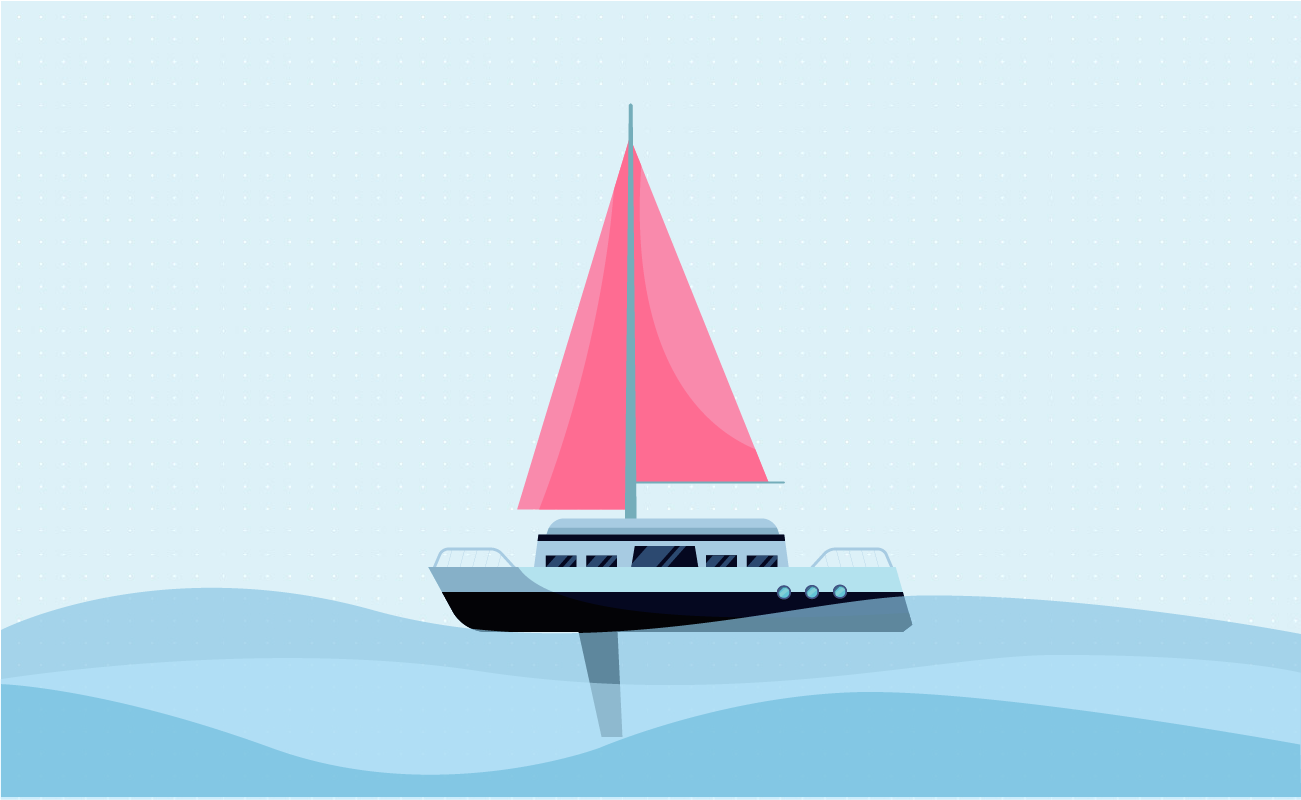
Sailboats come in many types and sizes. They are characterized by sails that run along masts and keels attached to the hull. There are small sailing dinghies that are usually used in lakes and sometimes sailed alone. Others are larger and have engines for cruising along open shores. Sailboats less than 20 feet long usually have no engine, while larger ones are partially or completely propelled by the wind in the sails.
Since sailboats without engines are completely wind-powered, you don't have to worry about gas and oil changes. Most engine-powered boats are fueled on gas. Boats over 45 feet usually run better and more efficiently than smaller boats. And like cars, brand-new boats generally have better gas mileage than old ones because of technology upgrades like fuel injections.
Price: According to Improve Sailing, a new sailboat that's 26 feet long has an average cost of around $80,000, while a used one could sell for around $20,000. A cruiser at 36 feet is priced at $150,000, while a used one is around $40,000. Smaller sailboats such as new beach catamarans have an average price of $7,500.
Many factors affect sailboat price, such as design quality, the latest technology and features. While used boats are generally more affordable, they come with more maintenance issues. The average annual maintenance cost for sailboats range between $3,000 to $7,000. Sailboats need regular interior and exterior cleaning, woodwork varnishing, hull waxing and occasional sail repairs.

An example in Mint Life notes the total annual cost of buying a 22-ft. sailboat including maintenance, winter storage, and insurance comes down to $4,300 a year, which is $385 per month.
Here's a list of several types of sailboats to choose from:
Here is a list of sailboat models you can find in the market:
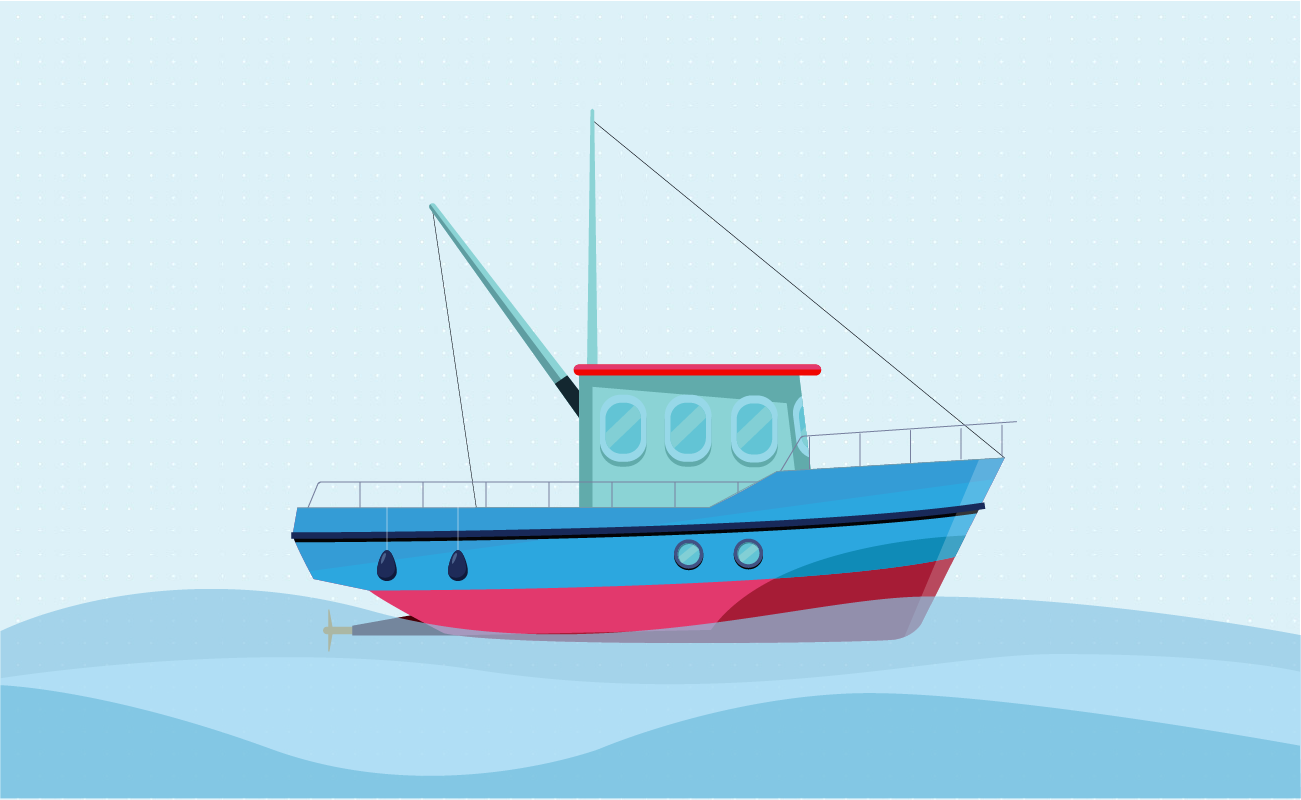
Different types of fishing boats are made for specific fishing activities. If you're fishing in small lakes, rivers, and occasional bays, a small or medium-sized boat will do. But if you're fishing in wavy open oceans or wide lakes, you'll need a larger boat.
Fishing boats come in two main deck layouts that determine how much floor space and storage you'll have. These deck layouts include:
Price: The average price of a new fishing boat ranges between $25,000 to $100,000, according to Go Downsize. New center console boats have an average price of $97,000, while dual console boats are priced around $115,000. Fishtalk Magazine states there are affordable dual and center console boats priced below $20,000.
How about fuel cost for the boat? On average, a fast motor boat uses around 20 to 30 gallons of fuel per hour on a cruise. For example, let's say a gas per gallon is around $2.50. If your boat uses 25 gallons per hour on a 5 hour trip, it will cost over $300. A slower boat will likewise incur lower fuel cost.

If your boat is stored in a marina, you'll need to have the paint scraped and painted every couple of years. Repainting the bottom of a boat will take over $300 per gallon. Remember to include this in your budget. Without repainting, weeds and barnacles grow on the underside of the boat.
To help narrow down your search, here's a list of common fishing boats:
Below are examples of popular fishing boat models in the market:
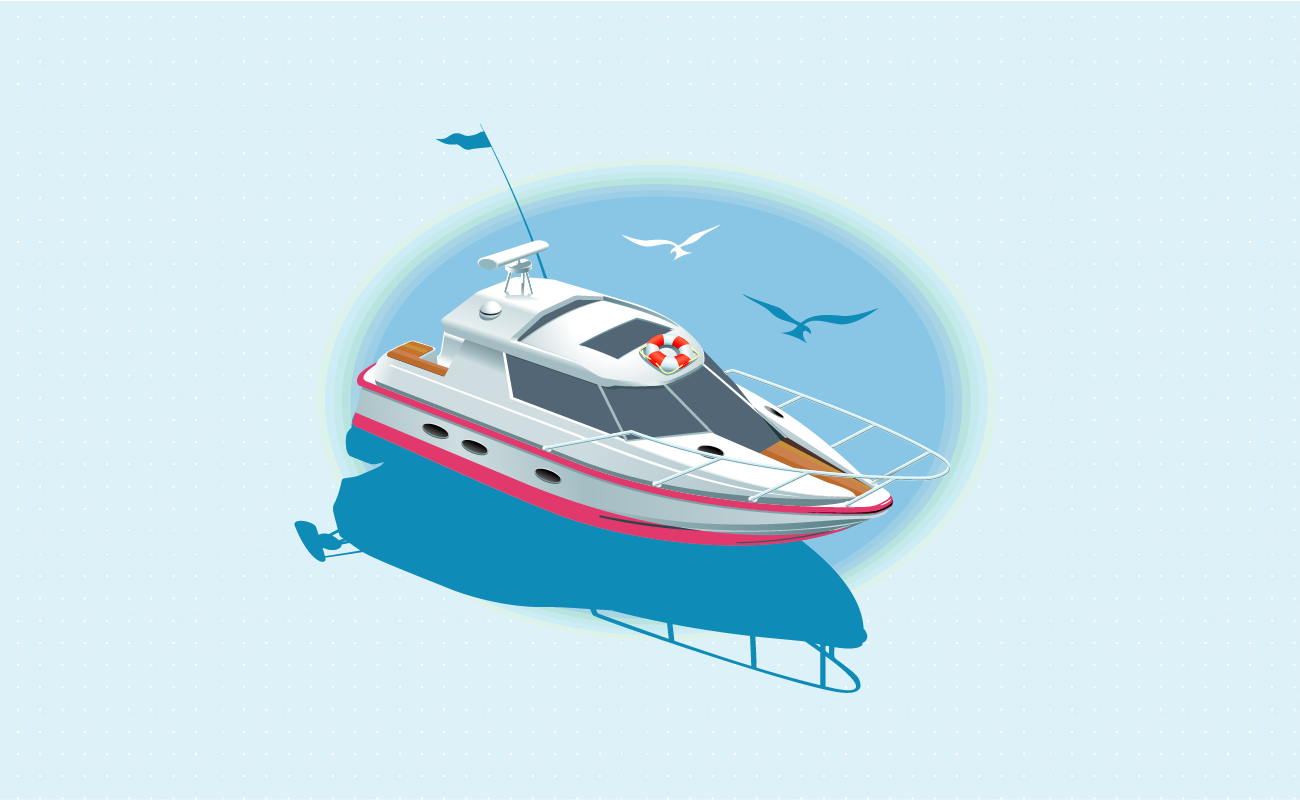
Motor yachts (sometimes called power cruisers or cruising yachts) are large recreational vessels which come with one or two propellers. These luxury boats are usually 26 to 100 feet in length and can accommodate up to 20 passengers.
While there are no set definitions for a yacht, these vessels are usually 40 to 90 feet long with a higher price point due to its luxurious setup and extended cruising capability. Yachts which are 60 feet are commonly run by the owner, while yachts between 60 to 90 feet typically require a crew and a captain.
When it comes to amenities and space, motor yachts go all out with several cabins, a full bathroom, and salon for social gatherings. Larger models have a kitchen, high-end appliance, as well as an upper deck or a “flybridge.” Decks may also have dining tables and settees where guests can lounge and enjoy the relaxing wind. It's great for entertaining a crowd or a small group of tourists for a luxurious coastal cruise.
Price: Motor yachts are one of the most expensive boats in the market. According to Boats.com, a brand new motor yacht has an average price of $1,290,000. Full-sized yachts, on the other hand, have an average price of $8.4 million.

The cost of owning a 60-ft. yacht priced at $1 million dollars is about $100,000 per year, according to Peter Schmidt, President of United Yacht Sales. This includes hiring a crew to regularly clean and repair the yacht. It's a luxury which entails having a lot of disposable income to maintain your rig.
Here are several examples of popular motor yacht models you will find:
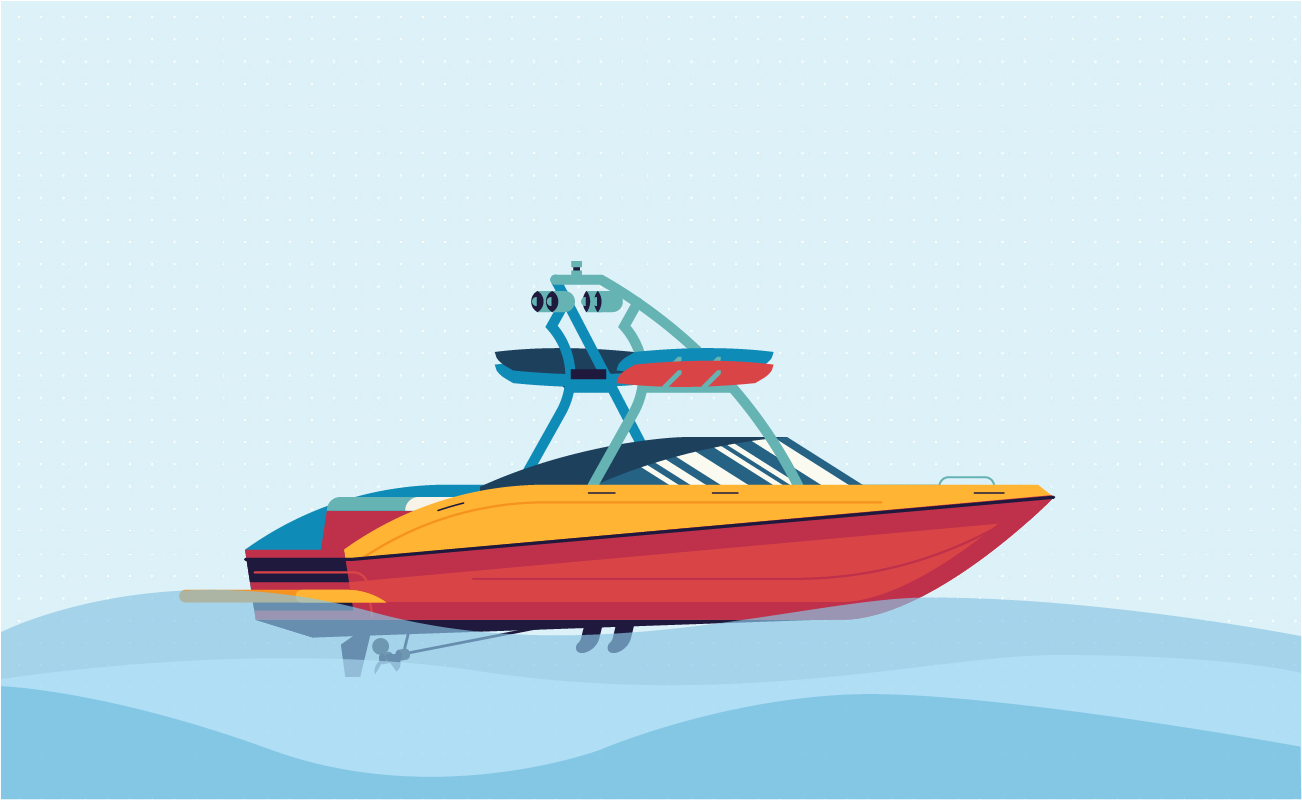
Ski boats and wake boats are specially made watersports and day cruising. These type of boats are trailerable and are usually between 16 to 28 feet in length. They also have a maximum capacity of up to 8 passengers.
Water skiers look for the flattest wakes in the lake for a smoother ride. This is the opposite for wakeboarders who seek higher wakes for more exciting moves. And for water skiing, less people on the boat means better performance. As for wakeboarding, the ride is more enjoyable with more people on board.
Many ski and wake boats are designed with powerful inboard jet propulsion engines for great speed. For water ski racing, ski boats can run up to 190 km/hr. Expect fuel costs to be higher compared to conventional sailboats and fishing boats.
Price: Ski and wake boats have a higher price point than some sailboats or fishing boats. New ski boats range between $35,000 to $200,000. Wake boarding and wake surfing boats commonly cost around $150,000, with other luxury models above $200,000. However, there are more affordable wake boats priced at $52,000.

In terms of maintenance, you should perform oil change every 50 to 100 hours or as recommended by the manufacturer. For winterizing, it costs between $1,000 to $2,500 a year. Winterizing entails draining accumulated water in the boat's engine, and replacing it with antifreeze. This keeps it from incurring damage caused by the cold.
Below are examples of well-known ski and wake boat models to choose from:
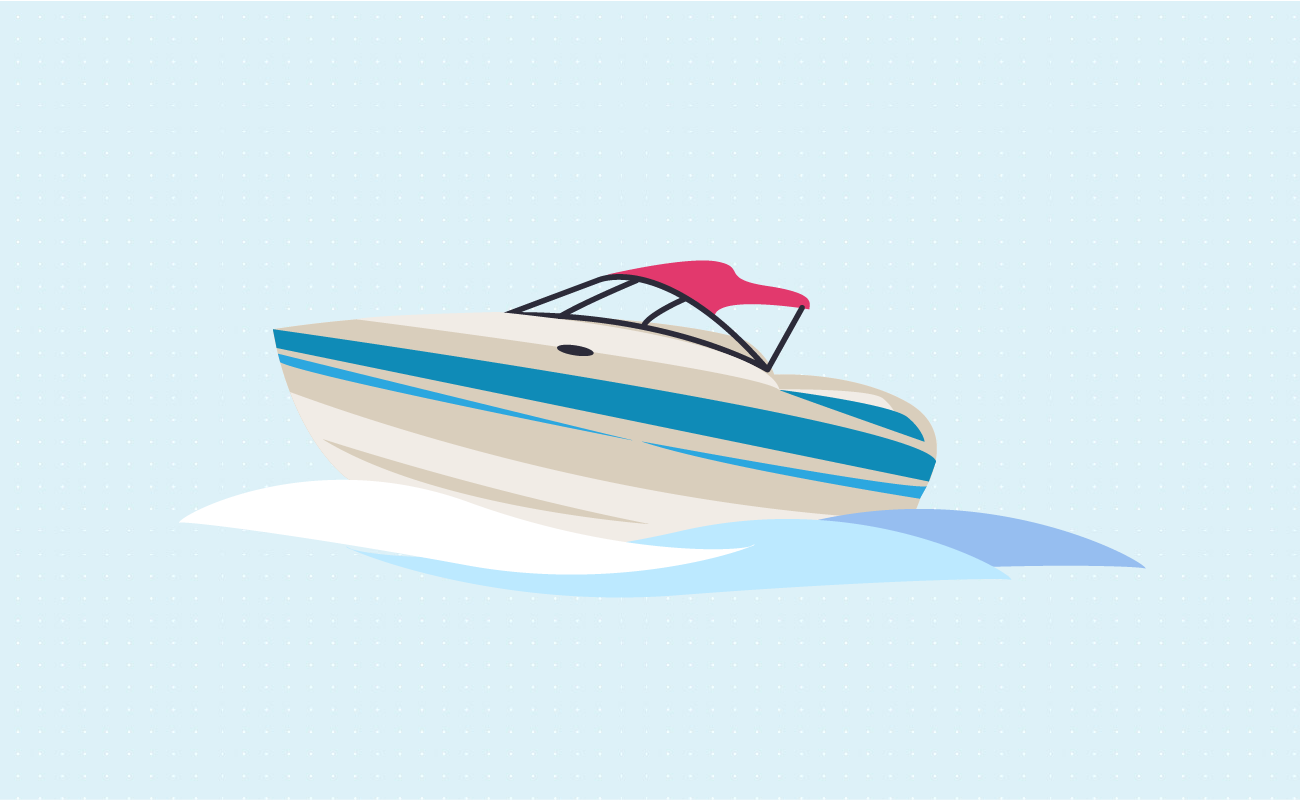
Another fast and versatile boat is a bowrider. It's a popular vessel for entertaining family and friends, holding up to 9 passengers at a time. Designed with a jet propulsion engine, it's equipped for handling towable watersports like wakeboarding and can be used as a fishing boat. Many bowriders are also marketted as sports fishing vessels. Generally 16 to 28 feet in length, bowriders are trailerable boats you can tow around on your trip.
Bowriders come with different designs, including beginner's boats under 20 feet long. Larger, high-end models come with a bow, mid-cabin, and a berth.
As for fuel consumption, it will depend on your usual cruising speed and the size of the boat. For instance, a 240 Bowrider uses up around 3 gallons of fuel per hour while cruising at a steady speed of 7 mph. At twice the speed, it reaches 15 mph and burns around 7 gallons per hour.
When it comes to maintenance, just like ski and wake boats, bowriders require routine oil change every 50 to 100 hours or as recommended by the manufacturer. For winterizing, expect to spend around $1,000 to $2,000 on maintenance cost.
Price: Entry-level bowriders start at around $17,000, while luxurious models can cost up to $150,000. Boats.com states that the average price for a bowrider falls around $58,000.

Planning a boat trip on rough waters? Large bowriders with at least 20 degrees of a V-shaped hull (referred to as deadrise) can glide through rough currents. Ask for this particular type of design from your dealer.
Below are examples of popular bowriders in the market:
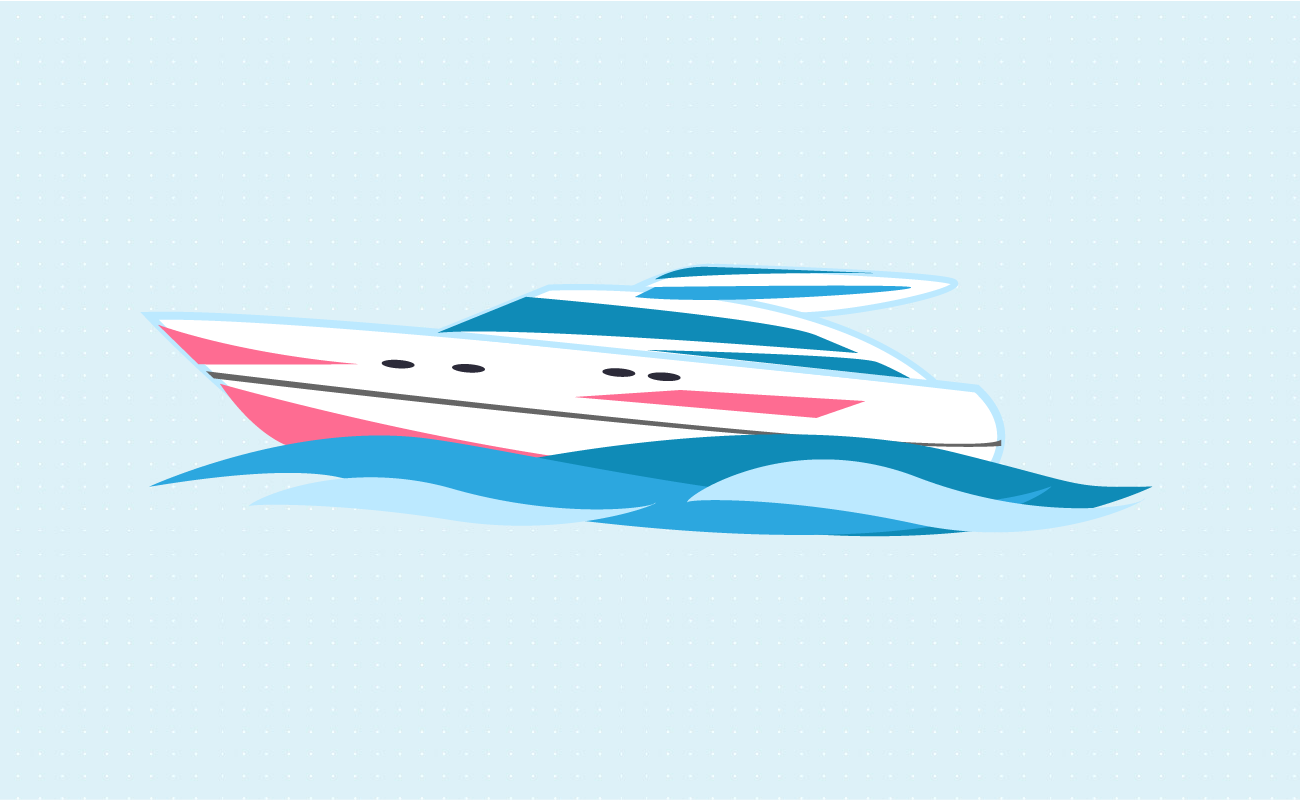
If you're serious about watersports racing, this is exactly what you need. A boat is considered a high performance vessel when it runs at 60 mph or more. These boats are primarily powered by outboard engines and are usually 16 to 24 feet long. Other luxurious models are around 34 to 54 feet in length.
High performance power boats can accommodate 8 passengers and are designed with go-fast center consoles for more seating capacity and wider space in the cockpit. Luxury models come with a 50-ft. V-bottom designed with a cabin that's perfect for beach vacations. On the other hand, a 34-ft. model can have 6 seats and a cozy space underneath its deck.
High performance powerboats are not for the faint of heart or bank account. In speed boating standards, more powerful engines mean higher maintenance costs. Some owners purchase factory warranty as long as 8 years to even out their maintenance expenses. Your lightning speed boat will likewise have higher fuel expenses compared to conventional motorboats.
Price: These boats have a higher price point than other speed boats. New models start at 6 figures around $300,000, with high-end models reaching over $1 million (at this rate, you might as well purchase a motor yacht).

The top operational cost for a high performance power boat is fuel. High-octane gas, which is recommended for performance and reliability, is more expensive than regular fuel. Be prepared to shoulder this expense.
The following are popular high performance power boats in the market:
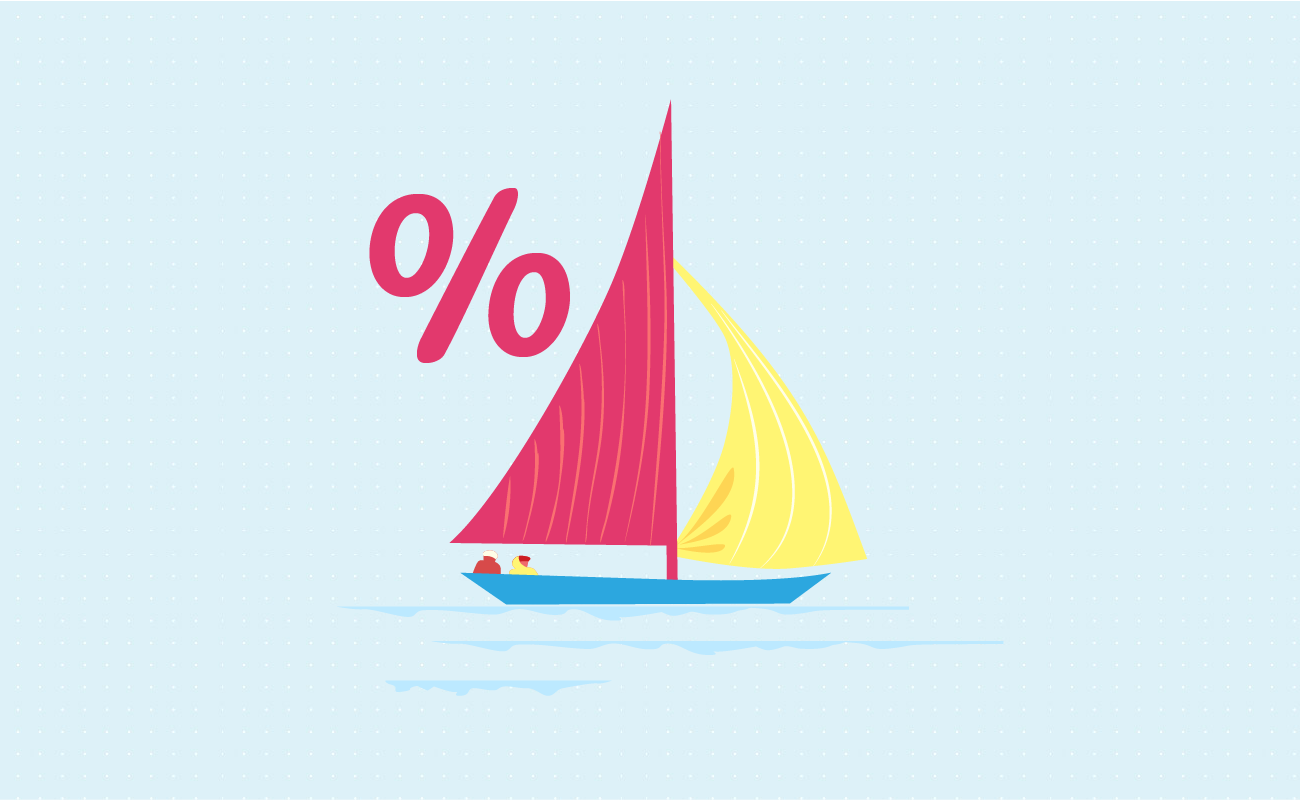
Once you've decided on the type of boat, it's time to prepare your finances. As you've noticed, most brand-new boats can cost a fortune. Even used ones in good condition can put a dent on your budget.
Securing a boat loan is quite similar to getting a car loan which is paid in fixed monthly payments. And just like any loan, you need to have a good credit score to get a boat loan approved.

Most lenders look for a credit score of 680 and above to approve a boat loan. You may still get a loan with a lower credit score, but this entails a larger down payment or a higher interest rate. Make sure to improve your credit score to obtain favorable rates.
Different lenders such as banks, credit unions, and online lenders offer boat loans. But unlike car loans, you can get a boat loan from special marine financial companies such as the National Marine Lenders Association.
The interest rates and loan terms will depend on your credit score and income, your lender, the size of the loan, and whether you obtained a secured or unsecured loan. Here's unsecured and secured loans how affect your payment terms:
While there are affordable boats in the market, boats are mainly considered recreational purchases such as RVs and motorcycles. Thus, rates for a boat loan are usually higher compared to cars (that have around 3.68% APR). Boat loan interest rates may start around 4.5% and up.
As for loan terms, payment periods range from 2 years, 15 years, and even 20 years. A more expensive boat will usually take a longer repayment period unless you're willing to pay down your loan within a shorter duration.
If you're a member of the following credit unions, it's worthwhile to take note of their loan terms and rates:
To give you a better idea on boat loan rates, Boat U.S. provides information on estimated rates and terms based on loan amounts. Presuming you have a high credit score, see the projected rates below. Just take note that rates and terms vary per lender.
| Boat Loan Amount | Rate | Term |
|---|---|---|
| $15,000 – $24,999 | 6.39% | Up to 12 years |
| $25,000 – $49,999 | 5.69% | Up to 15 years |
| $50,000 – $74,999 | 4.49% | Up to 20 years |
| $75,000 – $499,999 | 4.74% | Up to 20 years |
| $500,000 + | 4.99% | Up to 20 years |
Based on information from Boat U.S., if you have a $65,000 boat loan with 4.49% APR and make a 15% down payment, the loan term will be 180 months (15 years). If your boat loan is $200,000 with 4.74% APR and make a 15% down payment, the loan term will be 240 months (20 years).

Set on buying the boat? Have it checked first! Get help from an independent marine surveyor before purchasing a new or used boat. Just like home inspection, a marine surveyor will conduct thorough assessment and report the vessel's actual condition.
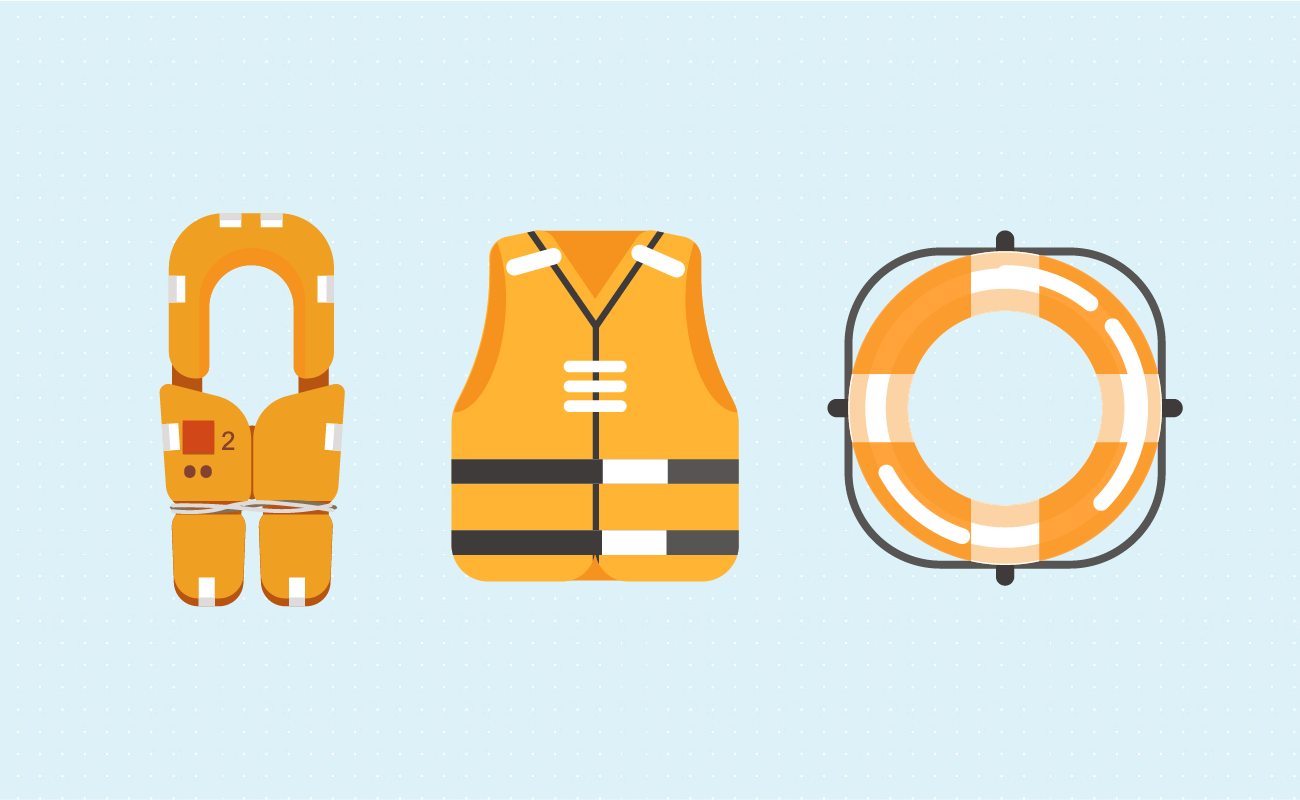
There are different types of insurance for all sorts of boats. You can have a small dinghy insured, as well as a jet ski and large yacht. There are even marine insurance policies specially made for members of boat clubs.
But in general, whether you have a yacht, fishing boat, or high performance motorboat, insurance can cost anywhere between $300 to $500 per year.
There are 2 types of boat insurance policies, mainly ‘agreed value insurance’ and ‘actual value insurance.’ The difference lies in how each insurance type deals with a boat's depreciation.
1. Agreed value insurance – Provides coverage based on the value of the boat when the policy was made. It's more expensive upfront, but it does not factor in depreciation for the total loss of a boat (thought some partial losses can be depreciated).
2. Actual cash value insurance – Costs less but it includes your boat's depreciation rate. It will only cover the actual cash value of your boat at the time you declare total or partial loss. As boats age, insurance providers usually recommend actual cash value policies.
Your insurance coverage will rely on the kind of policy you get. However, you can include more terms. Below is a list of coverage add-ons you can secure for your boat:
Apart from your boat loan and insurance, don't forget to register your boat. The cost of registration varies per state and also relies on the length and type of boat. This can cost you anywhere between $25 to $250.
You can register at the Department of Motor Vehicles (DMV) office. For complete licensing requirements for all states, you can go to the DMV's Boating License page.
Boats that should get registration include private vessels like yachts and even jet skis, sailboats, and powerboats. On the other hand, boats that do not require registration include the following:
Another important thing to consider is proper boat storage, especially during the winter. Keep in mind that storage costs depend on the size of your boat.
Some owners park their vessel in a marina all year round. This is a common practice in areas with temperate weather and mild winters. It applies to larger boats that can't be towed in dry storage lots. To insure boats don't sustain damage during the cold, owners winterize their boat and add ice agitators to prevent the water from freezing around their rig.
Renting a storage spot at a marina is called ‘renting a slip.’ If you get yourself a permanent spot, it can actually yield considerable savings. Improve Sailing states that regular docking slips for boats that are 24 to 74 feet cost $12 to $50/ft. per year. Prime areas in the US have a rate between $120/ft. per year to $240/ft. per year.
On the other hand, owners take their boat to outdoor dry storage facilities, which is considered the most budget-friendly option. It is also more common than indoor facilities. The average cost for outdoor storage ranges between $20 to $50/ft.
Another option during winter is indoor boat storage. This is the most expensive yet provides the most protection for your vessel during harsh winters. Indoor boat storage costs between $50 to $200/ft of boat. The challenge for owners is finding a nearby storage facility in their area.
For smaller boats, the best way to save on storage is to actually keep your boat inside a garage in your property. In this case, you'll need your own trailer to park and tow your boat.
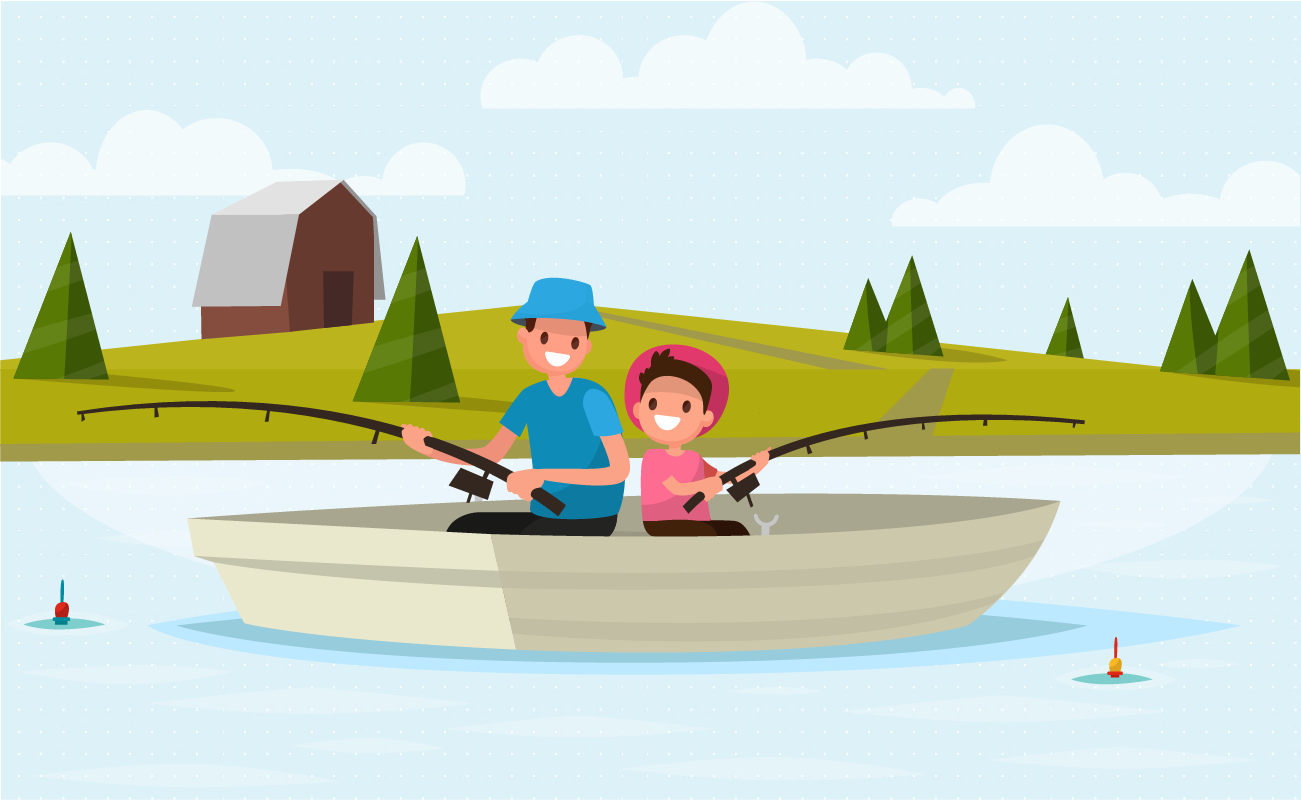
Let's suppose you're now a new boat owner. Now it's time to prepare yourself for boating adventures in lakes, rivers, or open seas. Though boating in many ways is an enjoyable and relaxing recreational hobby, it also requires proper training and navigational skills. That said, here are some basic tips for entry-level boaters:
Owning a boat is a major purchase that demands a lot of time and commitment. It's also a priceless and rewarding experience you can have in between busy days.
To keep your boat in good condition, make sure to keep tabs on your maintenance schedule. Apart from taking care of your rig, get training for basic safety and seafaring skills to be a more confident boater. At the end of it all, what matters is you're happy with your investment.
Are you planning on buying a recreational vehicle for cross country travel? Read our RV consumer's guide on our RV payment calculator.
Jose Abuyuan is a web content writer, fictionist, and digital artist hailing from Las Piñas City. He is a graduate of Communication and Media Studies at San Beda College Alabang, who took his internship in the weekly news magazine the Philippines Graphic. He has authored works professionally for over a decade.